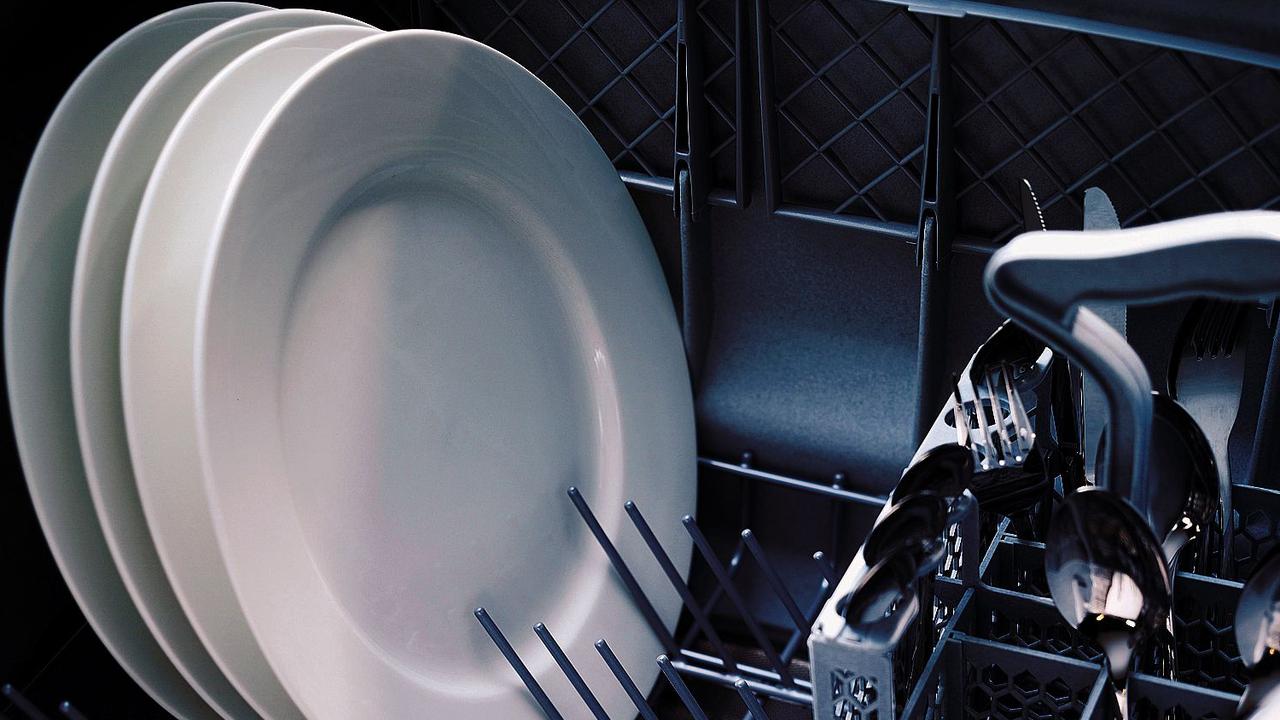Cleaning hacks: 7 things you need to know about your dishwasher
From the proper way to stack your dishes to what you can put inside, here is some information you might not know about your dishwasher.
Lifestyle
Don't miss out on the headlines from Lifestyle. Followed categories will be added to My News.
Taste’s food editors make it their job to know everything there is to know about kitchen appliances.
They’re experts in their field when it comes to smaller appliances like air fryers and larger appliances that can be found in most kitchens these days – like ovens, fridges and dishwashers.
So Taste researched if there’s anything they think Aussies might be surprised to discover about their dishwashers … and what they discovered blew their minds.
Here are a few gold nuggets of information you need to know:
Your dishwasher hates pre-washed plates
How many people do you know who rinse their plates BEFORE putting them through a dishwasher cycle? Loads, probably!
But the experts say that pre-rinsing is completely unnecessary and only wastes water (it can actually waste up to 40 litres!).
So, save your time and resist the urge to wash – simply scrape food off, stack correctly and leave the dishwasher to do the rest. If the machine is clean and the sprayers aren’t blocked, they should clean effectively.

It uses less water and energy than washing by hand
Our foodies always choose an eco setting for their dishwashers. This will ensure your dishes are washed at a lower temperature with no water wasted.
Although some eco settings are fairly quick, don’t think of it as a shortcut wash – the idea is that this cycle cleans efficiently, without wasting power and water unnecessarily. Yes that’s right, generally this cycle will also save on your energy bill.
It does more than kitchen stuff
Dishwashers aren’t just for cups, plates and cutlery. You can also use it for vases, vent covers, toothpaste mugs, non-plastic soap dispensers and cleaning utensils like your dishwashing brush.
You can also wash some kids toys, but make sure you only put plastics in that are BPA-free, to avoid toxic plastics leaching from the items as they heat.
It knows the difference between good and bad quality detergents
It’s highly likely that you’ll opt for a cheaper option at some point, but you’ll regret it.
Not only is a better-quality detergent more efficient at removing food and stains but it also smells nicer and is better for your machine and the items being washed.
Plus, you’ll probably find you need less of it, which will save you in the long run. The Taste Test Kitchen experts recommend Finish for best results.
You shouldn’t ever put wood in it
That includes your favourite chopping boards, fruit bowls and salad servers – sorry!
We appreciate that it’s tempting to put them in the dishwasher, but exposure to heat and moisture over a long period can cause timber to splinter, warp or break.
The pros at Finish instead suggest you “disinfect the cutting board by wiping it down using a solution made from 1 to 2 teaspoons of bleach per litre of water, before washing it by hand using hot, soapy water in the kitchen sink”.
If things come out wet, it’s probably you (not the machine)
There are lots of hacks doing the rounds on the internet that claim to help remove the moisture from your dishwasher (laying a tea towel inside as soon as the cycle finishes to absorb moisture is one, while opening the door while it’s still warm is another).
But actually, if everything in your dishwasher is coming out wet, it’s most likely down to you stacking it incorrectly.

Our experts say you should always stack cups at an angle, plates in size order (largest on the outside), place heavy pans on the bottom rack and light plastics on the top.
And always drop cutlery handles down (except for super-sharp knives, which probably should be carefully handwashed anyway).
The filter needs regular cleaning
You should always think of your dishwasher filter like your sink strainer or vacuum filter – you’d never let the grime just build up for months on end.
If your dishwasher smells unpleasant, isn’t draining properly or you can see bits of food at the bottom or on your kitchenware, it’s time to clean it (we recommend doing it at least once a month).
Although some modern dishwashers have self-cleaning filters now, if yours is manual you’ll need to remove it yourself.
We usually pull out the bottom rack, twist and unlock the filter and remove food debris and scum from it using a sponge and dishwasher soap.
For more recipe ideas, go to taste.com.au or check out the Taste Test Kitchen now.
Originally published as Cleaning hacks: 7 things you need to know about your dishwasher






